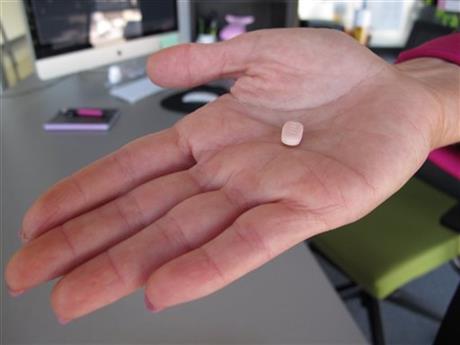WASHINGTON (AP) — The 15-year search for a pill that boosts sexual desire in women has hit another roadblock, raising questions about the future of efforts to develop a female equivalent to Viagra.

Sprout Pharmaceuticals said Wednesday it has reached an impasse with the Food and Drug Administration over its drug, flibanserin. The daily pill is designed to increase libido in women by acting on brain chemicals linked to mood and appetite.
The FDA questions whether the drug’s benefits outweigh its risks, considering its “modest” effectiveness and side effects including fatigue, dizziness and nausea.
Sprout said it is appealing an October letter from the FDA that denied approval and asked for more information. But chances for approval appear slim: Of the 17 appeals FDA considered last year, 14 were denied, according to government figures.
The agency’s letter is the latest challenge for companies working to develop therapies for women who report stress due to lack of libido. It’s a market drugmakers have been trying to tap since the success of Viagra, an erectile-dysfunction drug that was developed in the late 1990s to increase blood flow to the genitals.
But unlike sexual problems in men, most of women’s sexual issues are psychological, not physical. As a result, there are a number of alternate causes doctors must consider before diagnosing female sexual desire disorders, including relationship problems, hormone disorders, depression and mood issues caused by other medications. Likewise, other factors must be considered when treating it.
Experts say that developing drugs for female sexual dysfunction is so difficult because of how little we understand the underlying causes.
“Erectile dysfunction is a really easy thing to measure,” says Emory University researcher Kim Wallen. “Motivation is a hard thing to measure and, quite honestly, we don’t know enough about what creates sexual motivation to manipulate it.”
And Dr. Virginia Sadock, a psychiatrist, says the idea that a single pill can restore female libido oversimplifies the problem. Even if the FDA eventually approves a drug for female sexual dysfunction, she says it will likely be used with non-drug techniques to reduce stress and improve self-image.
“A pill just doesn’t take care of it,” says Sadock, who teaches human sexuality at New York University’s School of Medicine. “You may take a statin drug to control your cholesterol, great. But you should also exercise and you should also watch your diet.”
Drugmakers have made several unsuccessful attempts at tweaking their approach to boosting female libido over the years. Initially, Pfizer tested Viagra on women, hoping that the drug’s ability to increase blood flow to genitals would increase sex drive in women.
When that didn’t work, drugmakers turned to hormones, including the male hormone testosterone. In 2004, an FDA panel rejected Procter & Gamble’s testosterone patch, Intrinsa, due to questions about its long-term safety — despite evidence of effectiveness.
Sprout’s flibanserin is the first drug to approach the problem through brain chemistry. Sprout acquired flibanserin from Boehringer Ingelheim in 2011, after the German drugmaker abandoned development of the pill following an FDA rejection letter.
Researchers believe the drug works by boosting dopamine — a brain transmitter associated with appetite — while lowering serotonin — another transmitter linked with feelings of satiation. Studies of the drug show that it boosts sexual desire, reduces stress and increases “sexually satisfying events,” reported by women with hypoactive sexual desire disorder, or a lack of sexual appetite that causes stress.
Amanda Blackie of Nashville, Tenn., said she decided to enroll in a trial of the drug after noticing a lack of sexual interest in her fiancé. After a few weeks on flibanserin, Blackie said she got sexual cravings from simply talking to her partner on the phone — something she’d never experienced before.
Still, identifying the original source of her low libido is tricky. Like many women, Blackie talks about the demands of working a full-time job and caring for her teenage children.
“We’re so consumed and so bogged down … that most women are too tired to mess with it,” Blackie, 50, says.
Despite experiences of women like Blackie, the FDA has twice rejected flibanserin since 2010. A key issue for the agency is that women taking the drug reported only 1.7 more satisfying sexual experiences per month than women taking placebo.
Sprout executives argue that number is statistically significant and warrants approval for their product, considering there are no other drugs approved for the condition.
“We’ve now got 24 drugs for men for either testosterone replacement or erectile dysfunction,” says Cindy Whitehead, Sprout’s chief operating officer. “Yet there are zero drugs for the most common form of sexual dysfunction in women.”
The FDA, which does not comment on drugs under appeal, is expected to make a decision on Sprout’s appeal in the first quarter of next year.





